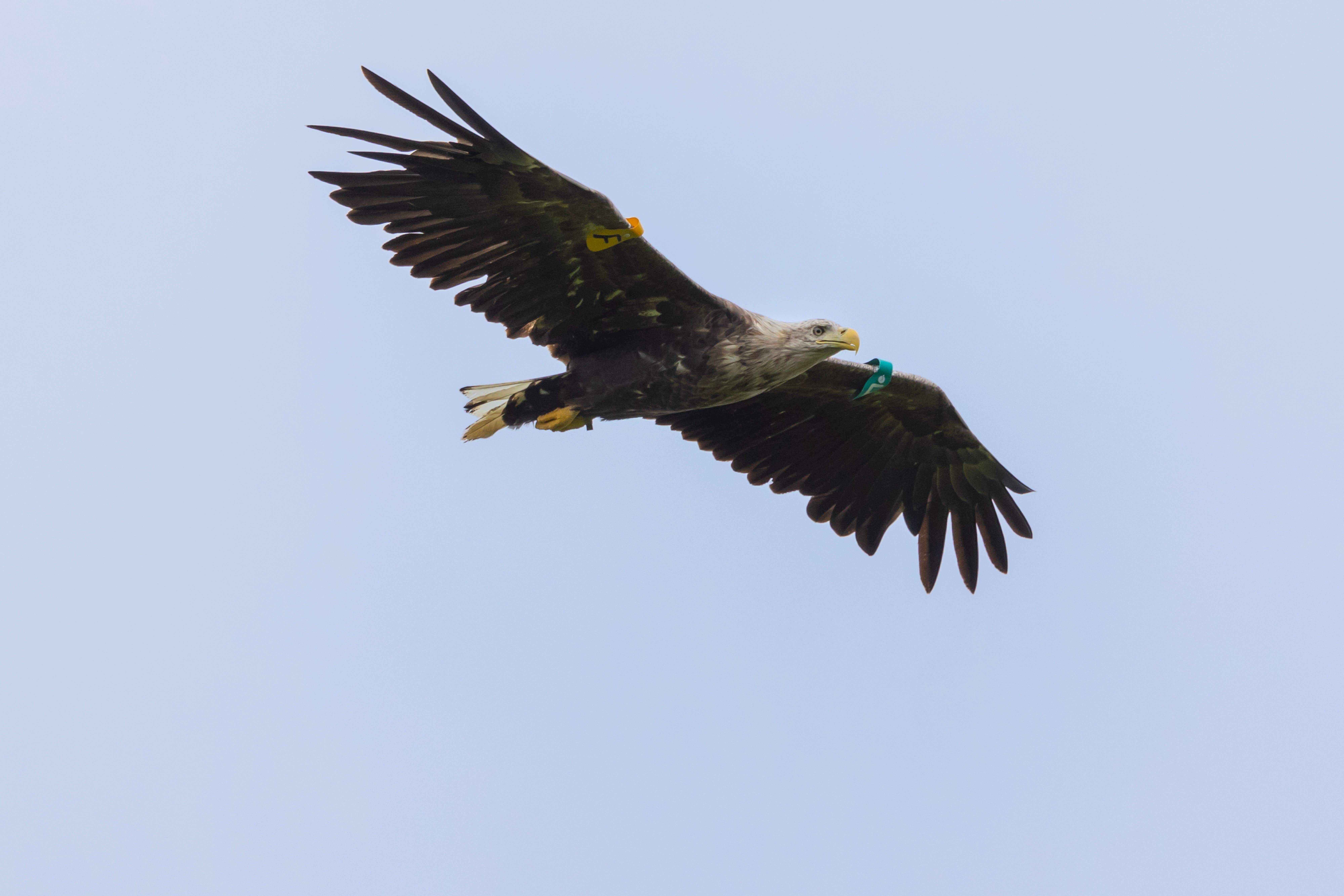White-tailed eagles breed in Northern Ireland for first time in 150 years
A chick has been bred in Co Fermanagh.

Your support helps us to tell the story
From reproductive rights to climate change to Big Tech, The Independent is on the ground when the story is developing. Whether it's investigating the financials of Elon Musk's pro-Trump PAC or producing our latest documentary, 'The A Word', which shines a light on the American women fighting for reproductive rights, we know how important it is to parse out the facts from the messaging.
At such a critical moment in US history, we need reporters on the ground. Your donation allows us to keep sending journalists to speak to both sides of the story.
The Independent is trusted by Americans across the entire political spectrum. And unlike many other quality news outlets, we choose not to lock Americans out of our reporting and analysis with paywalls. We believe quality journalism should be available to everyone, paid for by those who can afford it.
Your support makes all the difference.Conservationists are celebrating after white-tailed eagles bred in Northern Ireland for the first time for more than 150 years.
Two first-time breeders in Co Fermanagh successfully fledged one chick.
It has been hailed by the Northern Ireland Raptor Study Group (NIRSG) and the RSPB as correcting a multi-generational absence.
White-tailed eagles, described as a native component of Irish wildlife, became extinct in Ireland from the late 19th century.
Also known as the sea eagle, they are termed as the UK’s largest bird of prey, standing at almost one metre tall, with a wingspan of up to 2.4 metres and a distinctive white tail, and the birds are often described as a “flying barn door”.
They were reintroduced to Ireland by the Golden Eagle Trust (GET) and National Parks and Wildlife Service (NPWS) between 2007 and 2011, with the aim of establishing a viable population.
One hundred eagle chicks were brought from Norway and released in Killarney National Park, Co Kerry, and in 2020 more young birds were released at a number of sites across Ireland to bolster the population.
Released birds were wing-tagged, with tag colours relating to their year of birth and codes to identify individuals, and many were fitted with satellite tags to provide accurate details of their locations.
The two that have bred in Northern Ireland are just four years old and were released on the shores of Lough Derg, Co Tipperary in 2020, having been brought from Norway in phase two of the Irish reintroduction programme.
Co Fermanagh’s wetlands, woodlands and farmlands of have been described as providing the ideal habitats for this species.
I can’t describe the adrenalin rush the moment I saw the chick earlier this year and confirmed that the birds were not only nesting but had successfully reared a chick
Dr Eimear Rooney from NIRSG said she felt a rush of adrenaline when she spotted the chick earlier this year.
“The confirmation of this eagle species breeding in Northern Ireland corrects a multi-generational absence, symbolising the restoration of a once extinct species and highlighting the importance of wetlands, woodlands and farmland habitats on which many of our raptors depend,” she said.
“From reviewing satellite data provided by NPWS we had an idea that the birds were nesting, but with young eagles nothing is guaranteed. I can’t describe the adrenalin rush the moment I saw the chick earlier this year and confirmed that the birds were not only nesting but had successfully reared a chick.”
Dean Jones, investigations officer from RSPB NI added: “The return of breeding white-tailed eagles to Northern Ireland is a true testament to the power of conservation and really showcases the awe-inspiring resilience and adaptability of our natural world.
“The poisoning of the two white-tailed eagles in Glenwherry in May 2023 was devastating, however, to have this pair breeding successfully, under the protection of a caring local farmer, really illustrates how humans and birds of prey can exist in harmony.”
Gregory Woulahan, operations director from RSPB NI praised the efforts of the local farmer whose actions to keep the site private and minimise disturbance created the conditions for these young birds to rear their first chick.
“It is hoped this chick will reach adulthood and return to breed in four to six years boosting the population of these birds alongside creating tourism opportunities for the rural economy and the implementation of further efforts to boost and restore spaces for nature,” he said.